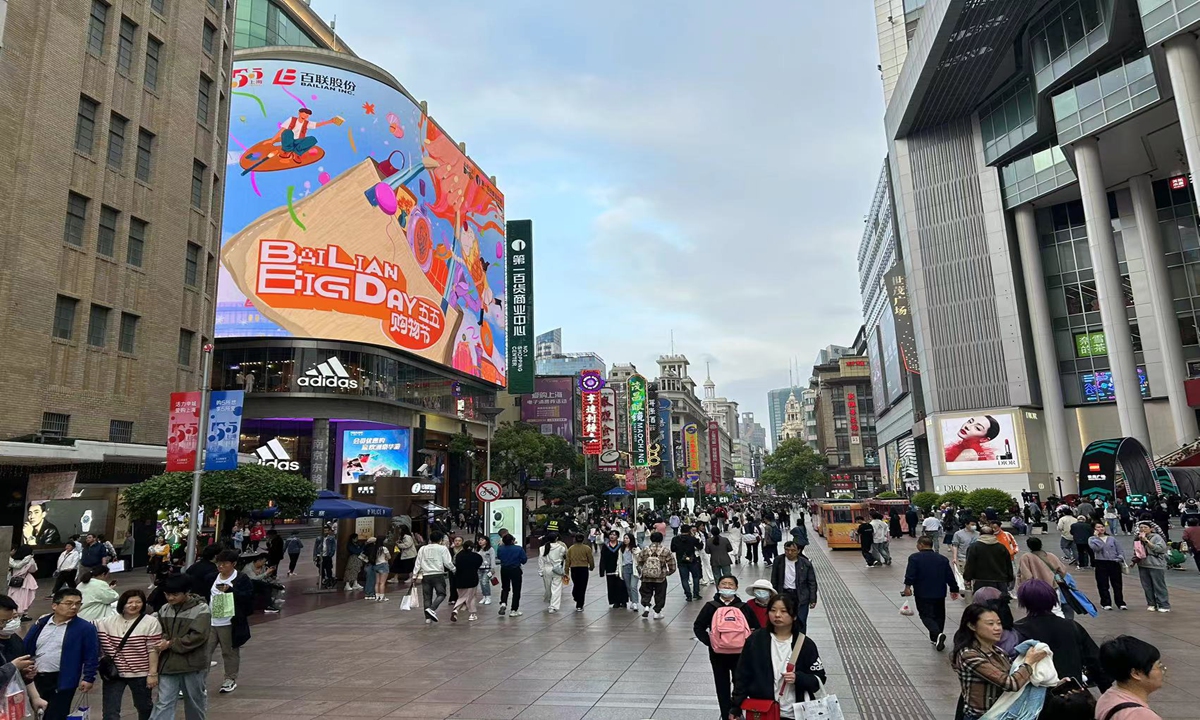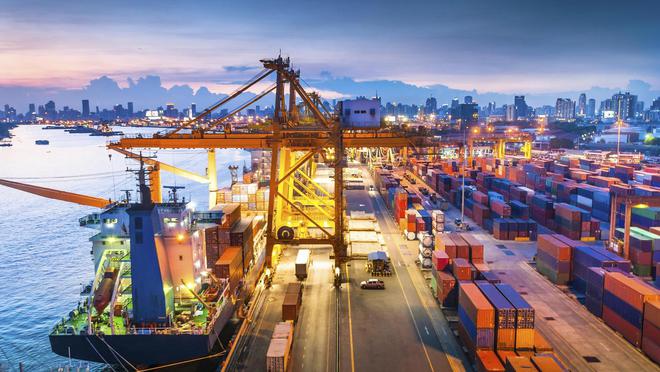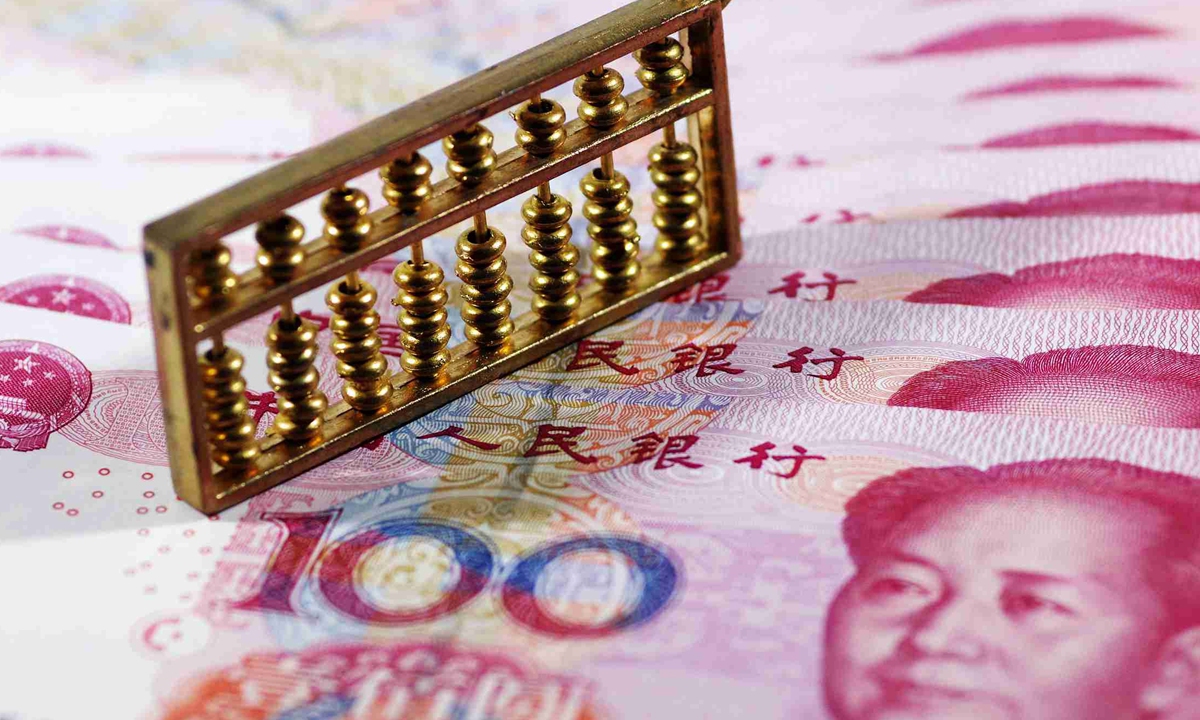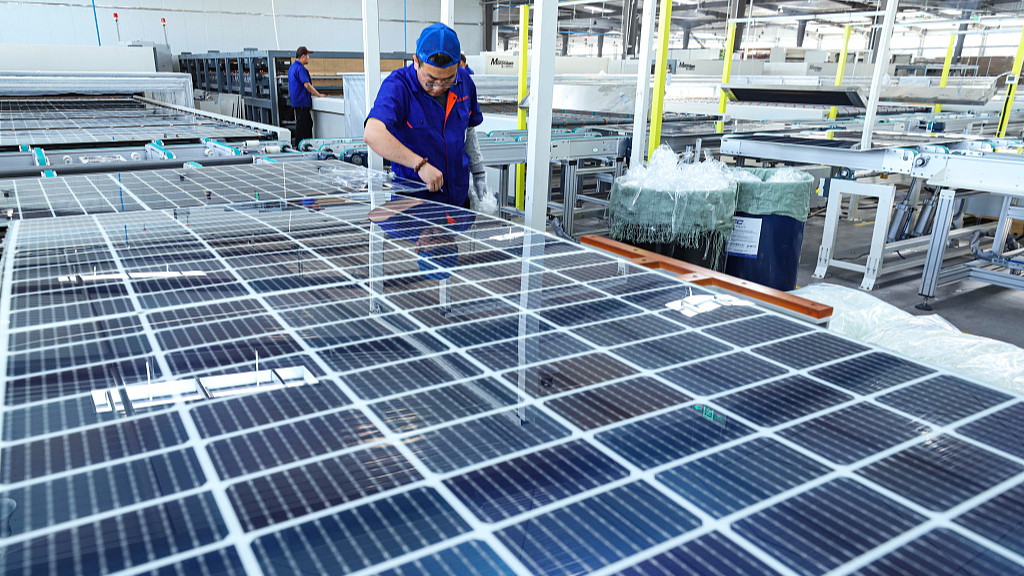
The U.S.-led West is fueling the narrative regarding China's "overcapacity" issue, claiming China's manufacturing capacity of the "new three" industries – electric vehicles (EVs), lithium batteries and solar panels – are exceeding global demand. The unfounded accusation, however, flouts economic theory and historical context. In reality, China's "new three" industries are vital contributors to global economic recovery and sustainable development.
From a demand-side perspective, China's new energy industry boosts people's living standards and welfare around the world by offering affordable green products.
The world needs green products, and China provides them. Simple economy. The International Energy Agency's (IEA) report "Net Zero by 2050" points out that to achieve the net zero goal by 2050 requires "a total transformation of the energy systems" with "immediate and massive deployment" of clean energy technologies. That means by 2030, solar photovoltaics should reach 630 gigawatts annually, and electric vehicles (EVs) are projected to constitute over 60 percent of global car sales. Despite being a major manufacturer of solar panels and EVs, China's capacity still falls short of the world's escalating demand for eco-friendly products necessary to achieve the goal set out in the Paris Agreement.
China supplies the world with an abundance of affordable options. Economically speaking, soaring productivity brings down costs, hence boosting industrial goods output. The process is known as industrialization, offering the public affordable products. In history, it was also known as the Industrial Revolution. Thanks to China's rising manufacturing capacity, once expensive products, such as smartphones or EVs, are now becoming better and more affordable to the public, increasing people's living standards.
From a supply-side perspective, China's new energy capacity creates substantial demand for the upstream and downstream sectors, given the industry's strong correlation with forward and backward sectors, and spillover effects. For example, China's new energy vehicle (NEV) industry has boosted a variety of industries, including automotive electronics, lithium batteries, fuel-cell power systems, downstream automobile rentals, auto finance, and technical and after-sales services. With open and cooperative attitudes and practices, China's new energy industry is increasing market demand for relevant industries and presenting new opportunities for countries from across the world, beneficial to global economic recovery.
Given historical trends in industrial development, the short-term fluctuations in the supply-demand equilibrium in emerging industries are subject to a broader and more complex set of factors than in traditional sectors. Most strikingly, technological breakthroughs may lead to a boom in a dominant emerging industry while it takes time for supporting sectors to keep up in terms of technology and manufacturing capacity. This could lead to a transitory supply-demand mismatch. For instance, the photovoltaics industry presents higher requirements for related industries such as energy storage and power transmission and distribution. Instead of "overcapacity," such brief supply-demand volatility presents opportunities for related upstream and downstream industries.
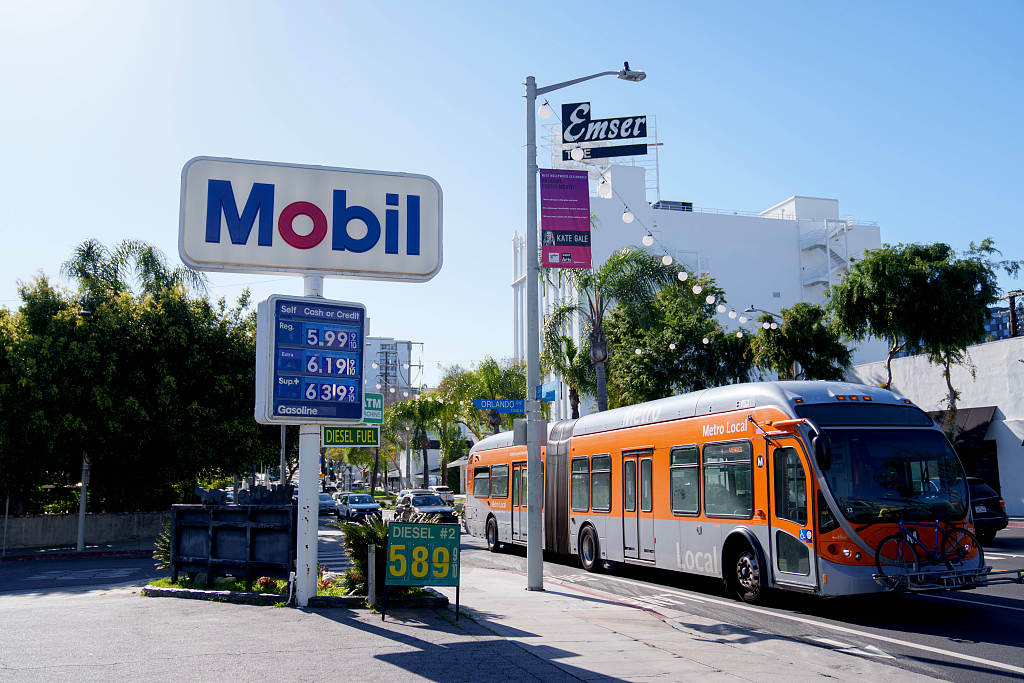
A Mobil gas station in Los Angeles, California, the U.S., April 2, 2024. /CFP
Additionally, when a new technology comes out, it will coexist with older technologies for producing similar products. For example, as a major source of carbon dioxide emissions, gasoline-powered vehicles coexist with EVs in the automotive industry because they meet comparable consumer demands. It's acknowledged that EVs could help combat climate change and achieve sustainable development, but some Western politicians have unfairly characterized China's NEV industry as being in "overcapacity" without mentioning the capacity of conventional gasoline vehicles in which Western nations excel.
Competition is vital to the global market economy, driving companies worldwide to continually innovate and improve products while preventing artificially inflated prices, a phenomenon observed in the new energy sector. Disregarding China's efforts to bring affordable green products to the general public, the U.S. introduced "discriminatory subsidies" under the Inflation Reduction Act (IRA) of 2022 helping U.S. companies gain an unfair competitive edge. The practice wastes production efficiency, disrupts market rules and violates the WTO guidelines, becoming an impediment to global economic recovery and sustainable development.
To make our home planet a better and greener place to live in, countries should look at industrial capacity in the context of global development, embrace cooperation, and adhere to economic and market norms, rather than make baseless accusations against China. This inclusive approach will only provide real benefits to people around the world.
以美国为首的西方正在助长有关中国“产能过剩”问题的叙述,声称中国“新三”产业——电动汽车(EV)、锂电池和太阳能电池板——的制造能力超过了全球需求。然而,这种毫无根据的指控蔑视了经济理论和历史背景。
实际上,中国的“新三产业”是全球经济复苏和可持续发展的重要贡献者。
从需求侧来看,中国新能源产业通过提供价格实惠的绿色产品,提高全球人民的生活水平和福利。世界需要绿色产品,而中国提供了绿色产品。简单的经济。国际能源署(IEA)的报告《到2050年实现净零排放》指出,到2050年实现净零排放目标需要“能源系统全面转型”,并“立即大规模部署”清洁能源技术。这意味着到2030年,太阳能光伏发电量将达到每年630吉瓦,电动汽车(EV)预计将占全球汽车销量的60%以上。尽管中国是太阳能电池板和电动汽车的主要制造商,但其产能仍无法满足全球对实现《巴黎协定》所设定目标所需的环保产品日益增长的需求。
中国为世界提供了大量经济的选择。从经济上讲,生产率的飙升降低了成本,从而提高了工业产品的产量。这个过程被称为工业化,为公众提供负担得起的产品。在历史上,它也被称为工业革命。由于中国制造能力的提高,曾经昂贵的产品,如智能手机或电动汽车,现在变得越来越好,对公众来说越来越实惠,提高了人们的生活水平。
从供给侧来看,中国新能源产能为上下游行业创造了大量需求,因为该行业与前后行业具有很强的相关性,并具有溢出效应。例如,中国新能源汽车(NEV)产业带动了多个行业,包括汽车电子、锂电池、燃料电池动力系统、下游汽车租赁、汽车金融以及技术和售后服务。中国新能源产业以开放合作的态度和实践,加大了相关产业的市场需求,为世界各国提供了新的机遇,有利于全球经济复苏。 鉴于工业发展的历史趋势,新兴产业供需平衡的短期波动比传统产业更广泛、更复杂。最引人注目的是,技术突破可能会导致占主导地位的新兴产业蓬勃发展,而支持行业在技术和制造能力方面需要时间才能跟上。这可能导致暂时的供需错配。例如,光伏行业对储能、输配电等相关行业提出了更高的要求。这种短暂的供需波动不是“产能过剩”,而是为相关上下游行业提供了机会。
此外,当一项新技术问世时,它将与生产类似产品的旧技术共存。例如,作为二氧化碳排放的主要来源,汽油动力汽车与汽车行业的电动汽车并存,因为它们满足了类似的消费者需求。众所周知,电动汽车可以帮助应对气候变化和实现可持续发展,但一些西方政客不公平地将中国的新能源汽车行业描述为“产能过剩”,而没有提到西方国家擅长的传统汽油车的产能。
竞争对全球市场经济至关重要,它推动着世界各地的公司不断创新和改进产品,同时防止人为抬高价格,这是新能源行业观察到的现象。美国无视中国为公众提供负担得起的绿色产品所做的努力,根据 2022 年《通胀削减法案》(IRA) 引入了“歧视性补贴”,帮助美国公司获得不公平的竞争优势。这种做法浪费了生产效率,扰乱了市场规则,违反了世贸组织的指导方针,成为全球经济复苏和可持续发展的障碍。
为了让地球家园更美好、更绿色,各国应该在全球发展的背景下看待工业能力,拥抱合作,遵守经济和市场规范,而不是对中国进行毫无根据的指责。这种包容性的方法只会为世界各地的人们带来真正的利益。




